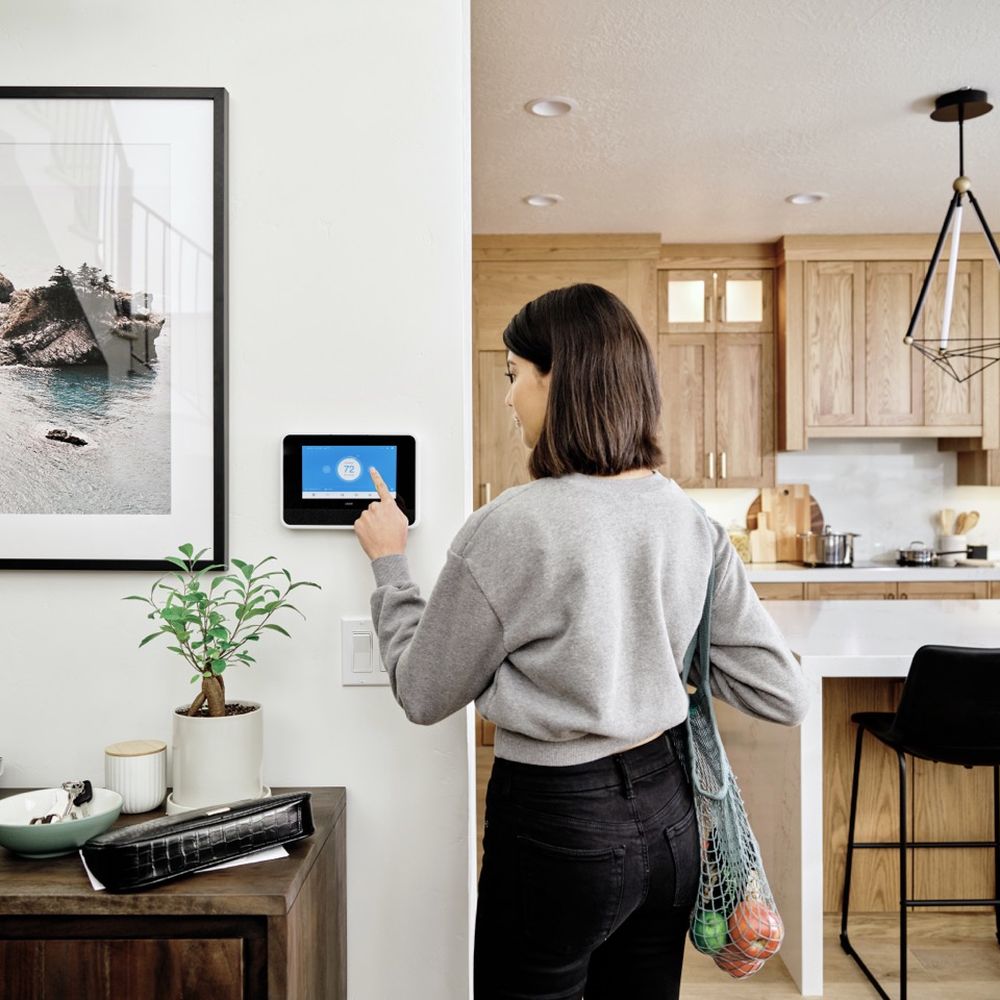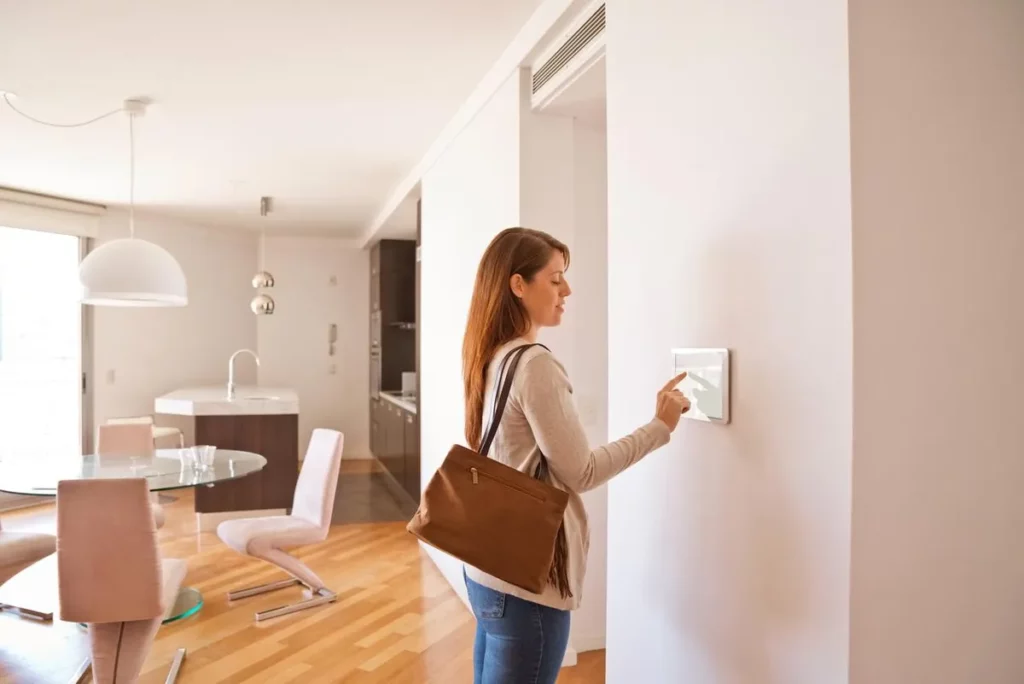In an age where technology is advancing at an unprecedented pace, home security has also evolved significantly. Traditional locks and alarms are no longer sufficient to deter intruders. Today, smart technology offers a range of solutions that not only enhance security but also provide homeowners with peace of mind. This article explores various smart home security solutions that can effectively keep intruders at bay.
Understanding Smart Home Security
Smart home security refers to the integration of advanced technology into home security systems. These systems leverage the Internet of Things (IoT) to provide real-time monitoring, automated alerts, and remote control capabilities. By connecting various devices, homeowners can create a comprehensive security network that is both efficient and user-friendly.
The Benefits of Smart Security Systems
One of the primary advantages of smart security systems is the ability to monitor one’s home from virtually anywhere. With mobile applications, homeowners can receive alerts, view live camera feeds, and even control locks and lights remotely. This level of control not only enhances security but also provides a sense of reassurance when away from home.
Additionally, smart security systems often come equipped with advanced features such as facial recognition, motion detection, and automated responses. These technologies can significantly reduce the likelihood of a break-in, as they can alert homeowners and authorities immediately when suspicious activity is detected.
Key Components of Smart Home Security
A comprehensive smart home security system typically includes several key components. These include smart cameras, smart locks, motion detectors, and alarm systems. Each of these elements plays a crucial role in creating a secure environment.
Smart cameras, for instance, allow for constant surveillance of the property. Many models offer features such as night vision, two-way audio, and cloud storage for recorded footage. Smart locks provide keyless entry, allowing homeowners to grant access to visitors without the need for physical keys. Motion detectors can be placed around the property to detect any unusual movement, triggering alerts or alarms when necessary.
Smart Cameras: The Eyes of Your Home
Smart cameras are an essential component of any modern security system. They provide real-time visual monitoring and can be accessed remotely via smartphones or tablets. The presence of these cameras can deter potential intruders, as they are often visible and serve as a warning that the property is under surveillance.
Types of Smart Cameras
There are various types of smart cameras available on the market, catering to different needs and preferences. Indoor cameras are designed for monitoring the interior of the home, while outdoor cameras are built to withstand the elements and provide surveillance of the exterior.
Some smart cameras are equipped with advanced features such as pan-and-tilt capabilities, allowing users to adjust the camera angle remotely. Others may include integrated motion sensors that trigger recording or alerts when movement is detected. Choosing the right type of camera is crucial for effective home security.

Installation and Integration
Installing smart cameras can be straightforward, with many models designed for easy DIY installation. However, for those who prefer a professional touch, hiring a security expert can ensure optimal placement and integration with existing systems. Integration with other smart devices, such as lights and alarms, can create a cohesive security network that enhances overall effectiveness.
Smart Locks: Keyless Entry for Enhanced Security
Smart locks represent a significant advancement in home security. By eliminating the need for traditional keys, these devices offer a more convenient and secure way to control access to the home. Homeowners can lock and unlock doors remotely, grant temporary access to guests, and monitor entry and exit activity.
Features of Smart Locks
Smart locks come with a variety of features designed to enhance security and convenience. Many models include fingerprint recognition, keypad entry, and mobile app control. This level of technology not only makes it easier to manage access but also reduces the risk of lost or stolen keys.
Some smart locks also offer integration with home automation systems, allowing them to work in conjunction with other devices. For example, a smart lock can be programmed to automatically unlock when a homeowner approaches, or to lock itself after a certain period of time.
Choosing the Right Smart Lock
When selecting a smart lock, it is important to consider factors such as compatibility with existing doors, security features, and user reviews. Many brands offer locks that can be retrofitted onto existing deadbolts, making it easier to upgrade without replacing the entire locking mechanism. Additionally, checking for certifications and ratings can provide reassurance regarding the lock’s reliability and security.
Motion Detectors: The First Line of Defence
Motion detectors are a critical component of any smart home security system. These devices can detect movement within a designated area and trigger alerts or alarms when unusual activity is detected. They act as an early warning system, allowing homeowners to respond quickly to potential threats.
Types of Motion Detectors
There are several types of motion detectors available, including passive infrared (PIR), microwave, and dual-technology sensors. PIR sensors detect changes in infrared radiation, making them effective for detecting human movement. Microwave sensors emit microwave signals and can cover larger areas, while dual-technology sensors combine both technologies for enhanced accuracy.
Choosing the right type of motion detector depends on the specific needs of the property. For instance, outdoor motion detectors need to be weather-resistant and have a wider detection range compared to indoor models.
Placement and Configuration
Proper placement of motion detectors is crucial for optimal performance. They should be positioned to cover entry points, driveways, and other vulnerable areas. Additionally, configuring sensitivity settings can help reduce false alarms caused by pets or passing vehicles.
Smart Alarm Systems: Instant Alerts and Responses
Smart alarm systems are designed to provide immediate alerts in the event of a security breach. These systems can be integrated with other smart devices, such as cameras and motion detectors, to create a comprehensive security network. When an alarm is triggered, homeowners can receive instant notifications on their smartphones, allowing them to take appropriate action.
Features of Smart Alarm Systems
Modern smart alarm systems offer a range of features that enhance their effectiveness. Many systems include options for professional monitoring, where security experts can respond to alarms and alert authorities if necessary. Some systems also allow for customisation, enabling homeowners to set specific zones and alerts based on their preferences.
Integration with smart home devices can further enhance the functionality of alarm systems. For example, an alarm can trigger smart lights to flash or activate cameras to begin recording when a breach is detected.
Monitoring Options
Homeowners can choose between self-monitoring and professional monitoring options. Self-monitoring allows homeowners to receive alerts directly on their devices, while professional monitoring provides an added layer of security, with trained personnel ready to respond to incidents. The choice between these options often depends on individual preferences and the level of security desired.

Integrating Smart Security Solutions
To maximise the effectiveness of home security, integrating various smart solutions is essential. A cohesive system allows for seamless communication between devices, enhancing overall security. For instance, when a motion detector is triggered, it can activate cameras and send alerts to the homeowner simultaneously.
Creating a Smart Home Ecosystem
Building a smart home ecosystem involves selecting compatible devices that can work together. Many brands offer products designed for interoperability, allowing homeowners to create a customised security network. This can include smart locks, cameras, motion sensors, and alarm systems that communicate with each other through a central hub or app.
Additionally, considering voice-activated assistants can further enhance convenience. Homeowners can use voice commands to control their security devices, making it easier to manage the system without needing to access a smartphone or tablet.
Regular Maintenance and Updates
To ensure the longevity and effectiveness of smart security systems, regular maintenance and software updates are crucial. Keeping devices updated with the latest firmware can help protect against vulnerabilities and improve functionality. Additionally, testing devices periodically and replacing batteries as needed can prevent potential failures.
Conclusion: A Safer Home with Smart Technology
In conclusion, smart home security solutions provide an effective means of deterring intruders and enhancing overall safety. By integrating smart cameras, locks, motion detectors, and alarm systems, homeowners can create a comprehensive security network tailored to their specific needs. The convenience and peace of mind offered by these technologies make them an invaluable investment for any homeowner.
As technology continues to evolve, staying informed about the latest advancements in home security will ensure that homes remain safe and secure. Embracing smart technology is not just about protecting a property; it is about creating a safer environment for families and loved ones.
Related article: How Back to Base Alarm Systems Provide 24/7 Peace of Mind for Homes & Businesses